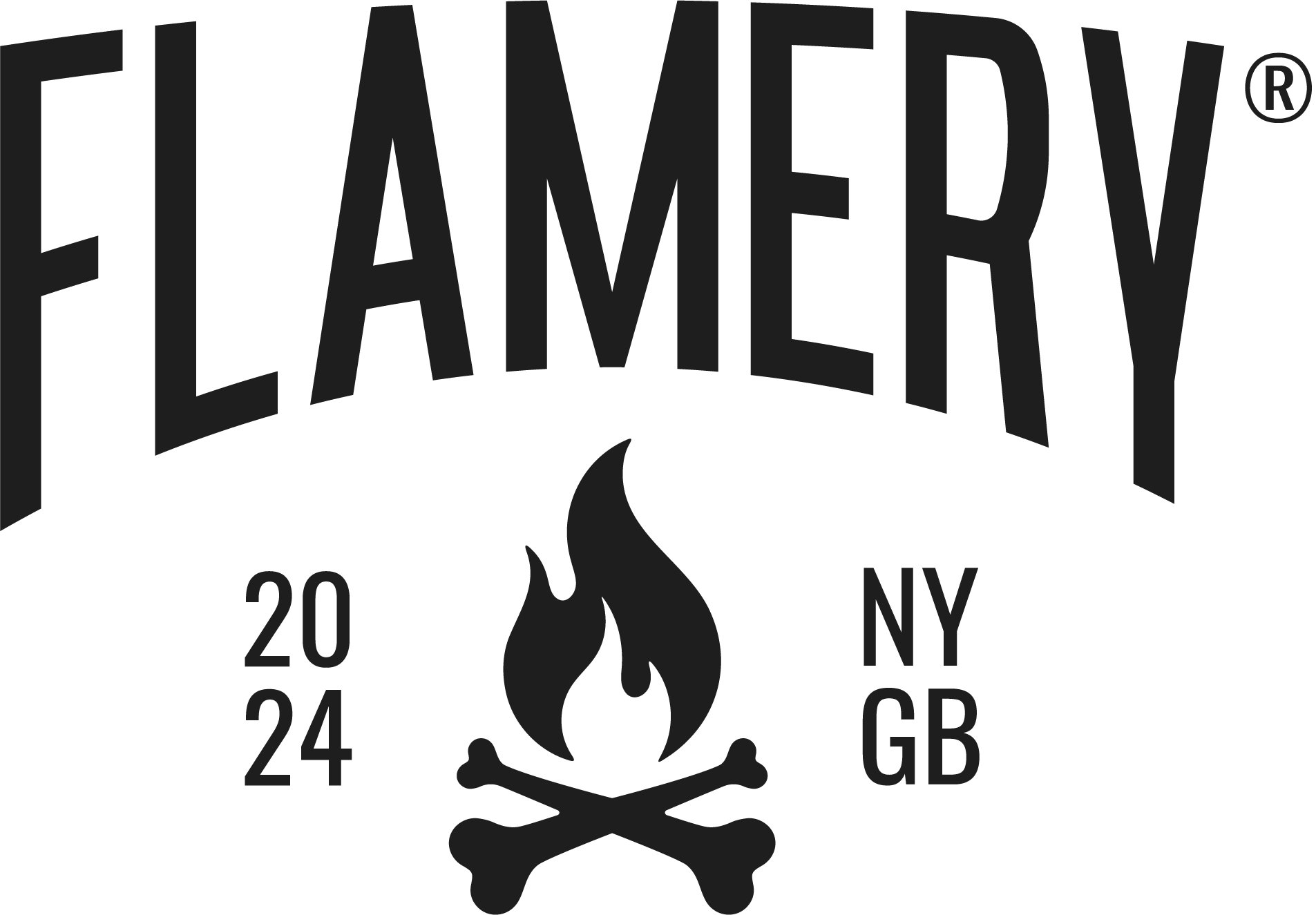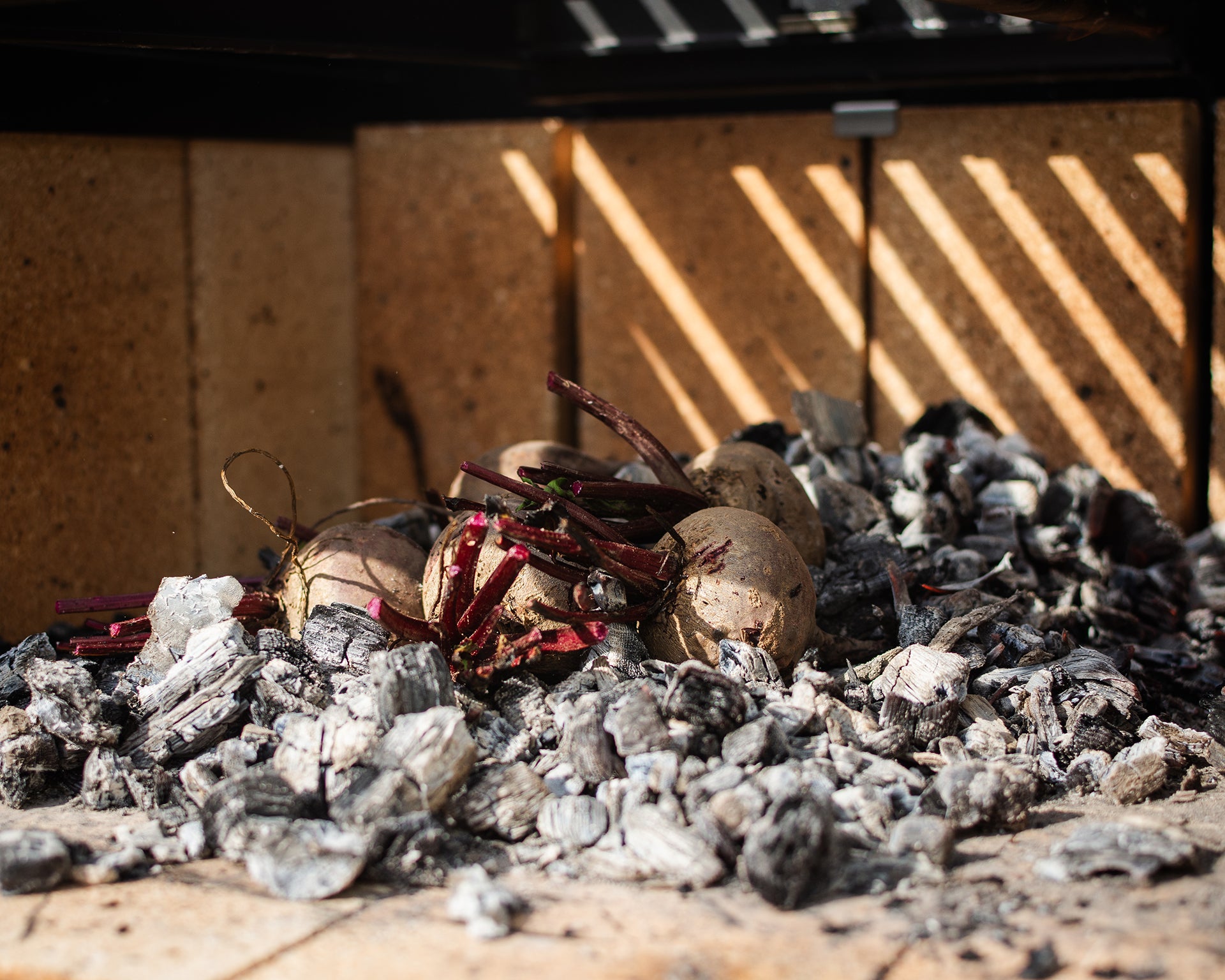Despite the name there’s nothing actually dirty about this cooking method, no dirt, germs, or anything else you may be thinking…
Dirty cooking is an ancient, primal technique that brings out the boldest flavours from your ingredients. By cooking food directly on hot coals or embers, you get an intense smoky flavour and an incredible char that’s hard to replicate any other way. You don’t require a pan, grills, or a stone just the heat of white-hot coals. It’s rustic, it’s raw, and it delivers a flavour like no other.

Start with the fuel
The secret to dirty cooking lies in your fuel. High-quality British charcoal or well-seasoned hardwoods like oak or hickory are ideal, burning longer and hotter for that bed of glowing embers you’ll cook directly on. Avoid softwoods like pine or spruce, as they produce unwanted flavours and excessive ash. For an authentic dirty cooking experience, the right fuel makes all the difference.
Lighting the Fire
The key to successful dirty cooking is creating a robust bed of red-hot embers. Start by lighting your charcoal or wood in the Firebox of your Flamery grill. Allow the fire to burn down until the coals are glowing red, which typically takes 30–45 minutes, depending on the fuel.
Once your embers are ready, rake them into a concentrated pile on one side of the grill, leaving enough space to work on the other side. This way, you can control the heat more effectively—hot enough to sear but not so intense that your food burns on contact. Balance is key.
Dirty cooking is a spontaneous art—if your coals are glowing white after a previous grilling session, seize the moment. Grab whatever ingredients are handy and let the magic happen.

Choose Your Ingredients
Dirty cooking works best with ingredients that can stand up to intense heat while absorbing deep, smoky flavours. Here are a few classics:
Vegetables: Aubergines, peppers, corn on the cob, and onions are fantastic choices. Their thicker skins can handle the direct heat, and they’ll soften beautifully, picking up a rich smokiness. Turn them occasionally to get an even char.
Steaks: Thick cuts like rump or ribeye thrive in the embers. Let them sear for 2-4 minutes per side, depending on thickness, aiming for a smoky, crisp crust with a juicy centre.
Fish: Whole fish with the skin on—like sea bass or mackerel—are great for dirty cooking. If you're dealing with delicate items like fish, consider wrapping them in foil or banana leaves for protection while still infusing them with smoky flavour. Scallops in their shells also work beautifully.
Before you start, make sure your ingredients are dry and well-seasoned. A simple rub of olive oil, salt, and pepper works wonders, allowing the natural flavours and smoky essence to take centre stage.

Time to Clean and Serve
Once your food is done, remove it from the embers and let it rest for a few minutes. Don’t be intimidated by the charred exterior—it’s part of the experience. Sometimes, you’ll want to peel away the blackened skin, like with peppers for soups or aubergines for dishes like baba ganoush. However, the seared crust can also be the best part—adding a satisfying bitterness that contrasts beautifully with the tender inside. Think of the perfect steak, charred on the outside and pink in the middle, or naturally sweet vegetables like beetroot, carrots, or hispi cabbage, given that extra layer of flavour from the flames.
Dirty cooking brings a new dimension to your food, where the char is often the charm. Embrace the burnt edges, the bold flavours, and the primal joy of cooking directly on fire.





Share:
A Step-by-Step Guide to Seasoning Your Grill
How To Set Up For Wood Fired Pizzas